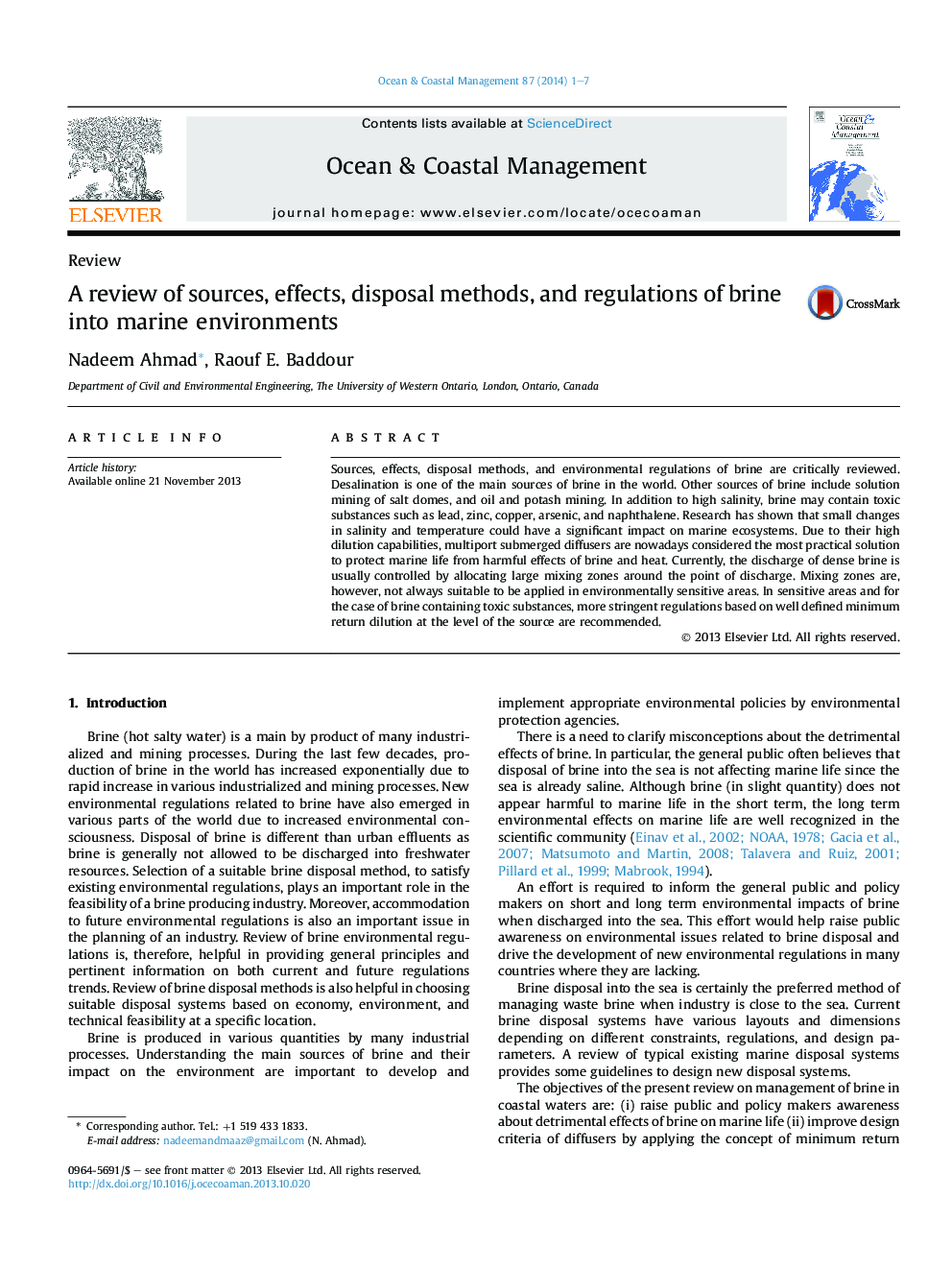| Article ID | Journal | Published Year | Pages | File Type |
|---|---|---|---|---|
| 1723814 | Ocean & Coastal Management | 2014 | 7 Pages |
•Desalination is one of the main sources of brine in the world.•Brine significantly impacts marine ecosystem.•Brine is disposed by allocating large mixing zones around discharge point.•Mixing zones are not applicable in sensitive areas.•Minimum return point dilution could be applied to regulate brine in sensitive areas.
Sources, effects, disposal methods, and environmental regulations of brine are critically reviewed. Desalination is one of the main sources of brine in the world. Other sources of brine include solution mining of salt domes, and oil and potash mining. In addition to high salinity, brine may contain toxic substances such as lead, zinc, copper, arsenic, and naphthalene. Research has shown that small changes in salinity and temperature could have a significant impact on marine ecosystems. Due to their high dilution capabilities, multiport submerged diffusers are nowadays considered the most practical solution to protect marine life from harmful effects of brine and heat. Currently, the discharge of dense brine is usually controlled by allocating large mixing zones around the point of discharge. Mixing zones are, however, not always suitable to be applied in environmentally sensitive areas. In sensitive areas and for the case of brine containing toxic substances, more stringent regulations based on well defined minimum return dilution at the level of the source are recommended.
